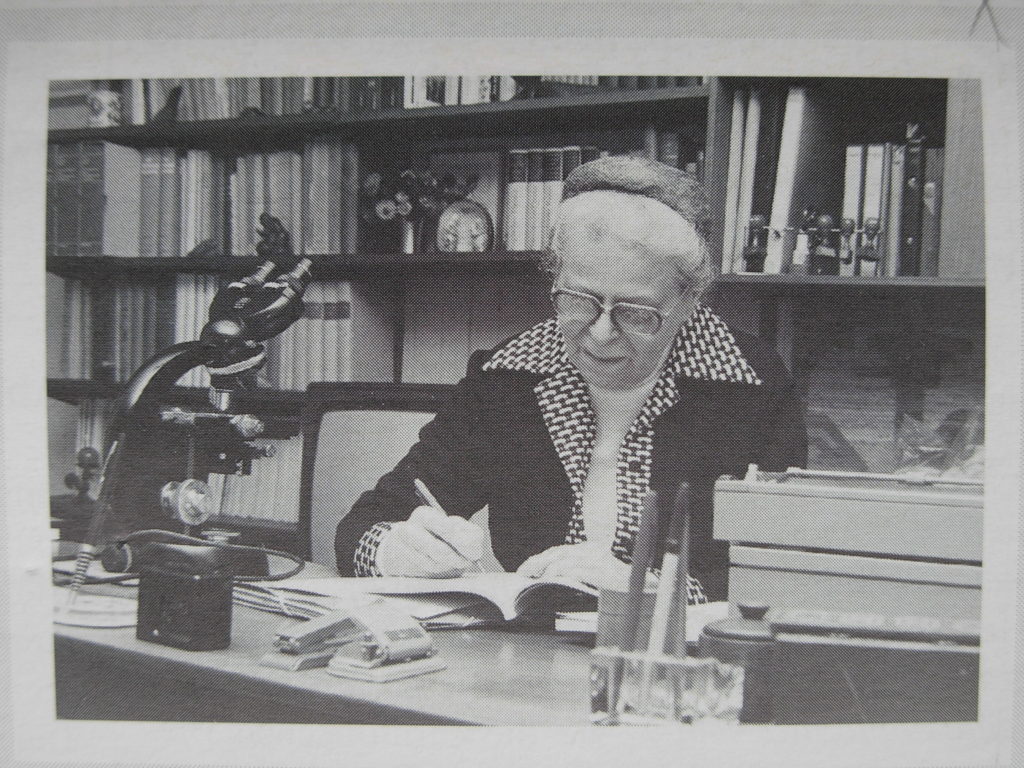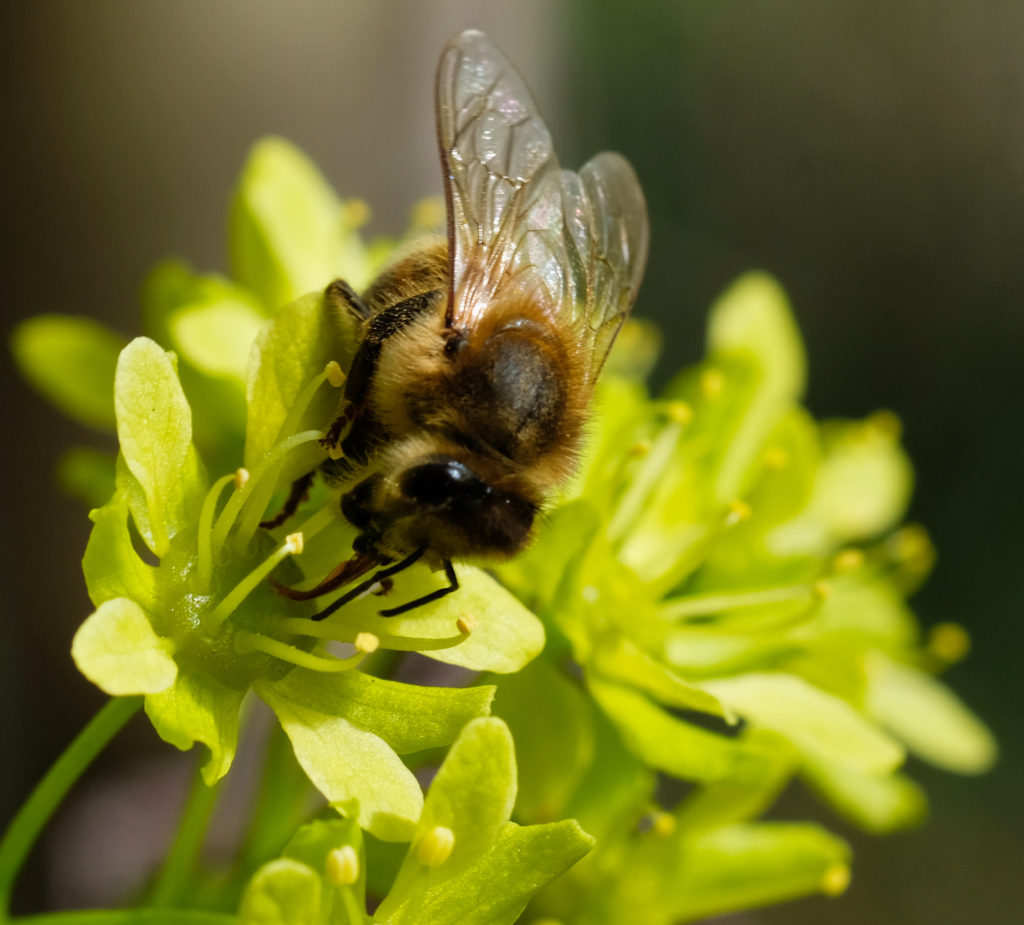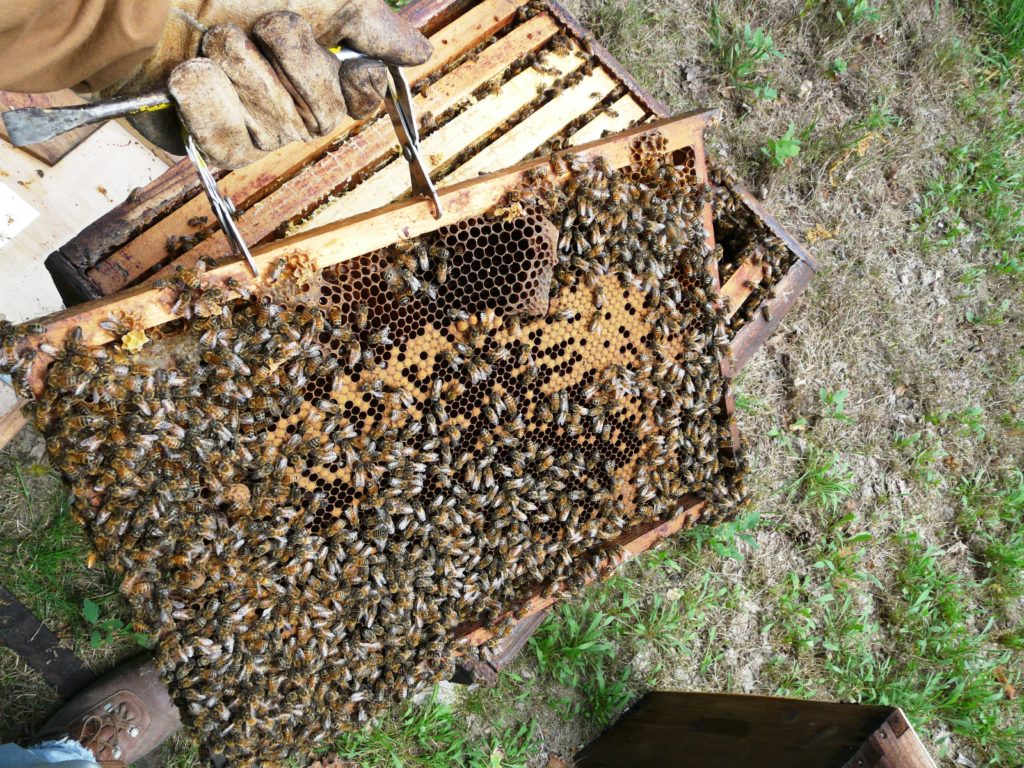Bees are among the world’s most important insects. And a great deal of what we know about bees comes from the career of Dr. Anna Maurizio, who became one of the world’s leading melissopalynologists. You do know what a melissopalynologist is, don’t you?
Anna Maurizio was born in Switzerland on November 26, 1900 (died 1993). Her father was a professor of botany, and Maurizio followed closely in his footsteps, completing a doctorate on the topic of mycology. She learned of fungi that affected the lives of bees. She started working on bees, and never stopped. In 1928, she began working in the Bee Section of the Swiss Federal Research Institute for Milk Husbandry, and she remained there for the majority of her career.

Her research ranged widely across bee biology. Studies of pollen dominated the first half of her career, covering the relationships between bees and pollen. In 1954, she published a major work on the composition, collection, utilization and identifications of pollen that established her as the world’s leading scholar on the subject. Her knowledge of pollen led in the second half of her career to studies of the linkage between types of pollen and various aspects of bee nutrition, honey characteristics and ecological relationships. As she wrote,

“The concept of bienenbotanik (bee botany) comprises the relations of the honeybees with their plant environment. To this field belong first of all bee plants (secretion of nectar, collection of nectar, production and collection of pollen), poisoning of honeybees by plants, microscopy of honey and pollen and also the relation of apiculture and agriculture.”
Anna Maurizio pioneered techniques to trace the pollen in honey back to the originating plants—that work is called melissopalynology. Understanding the pollen composition of honey allows researchers to trace plant use by bees, a fundamental aspect of bee ecology. From that basic research (her work is still the foundation of much pollen analysis) comes rationales for conserving plant diversity and controlling factors that reduce bee survival.

And that work is important for environmental sustainability, because bees play such a large role in the pollination of flowering plants. According to the Earth Day Network, individuals of the world’s 20,000 bee species (4,000 in the U.S.) pollinate about 35% of the world’s food production, valued at $577 billion U.S. dollars—and more importantly, feeding billions of people. In total, about 90% of all flowering plants in the world (that’s about 370,000 species) depend on insects, especially bees, for pollination.
How effective are bees at pollination? A typical colony of bees includes from 10,000-80,000 individuals. The Earth Day Network uses 25,000 as an average number, and then suggests the average bee takes 10 trips to and from the hive each day and visits 50-1000 flowers on each trip. Therefore, one colony can pollinate between 12.5 and 250 million flowers per day!
Bee populations have been under stress lately. In the U.S. and Europe, colonies have been losing about 30% of bees annually, for all sorts of reasons—habitat loss, climate change, diseases and chemical pollution. This rate of loss is well below replacement levels.. However, in other parts of the world (and bees live everywhere, from deserts to polar regions), we know little about the condition of bee populations.
Looks like we need a lot more melissopalynologists—or maybe just apiculturists—to “bee” working!
References:
Earth Day Network. 2018. Fact Sheet: Bees. Available at: https://www.earthday.org/2018/05/23/fact-sheet-bees/. Accessed November 25, 2019.
Encyclopedia.com. Maurizio, Anna (1900-1993). Available at : https://www.encyclopedia.com/women/encyclopedias-almanacs-transcripts-and-maps/maurizio-anna-1900-1993. Accessed November 25, 2019.
Louveaux, J. 1990. L’oeuvre d’Anna Murizio. Apidologie 21(5):397-416. Available at: https://www.apidologie.org/articles/apido/abs/1990/05/Apidologie_0044-8435_1990_21_5_ART0003/Apidologie_0044-8435_1990_21_5_ART0003.html. Accessed November 25, 2019.
Playfair, Richard. 2019. How Many Bees Live in a Hive? School of Bees, February 10, 2019. Available at: https://schoolofbees.com/how-many-bees-live-in-a-hive/. Accessed November 25, 2019.
